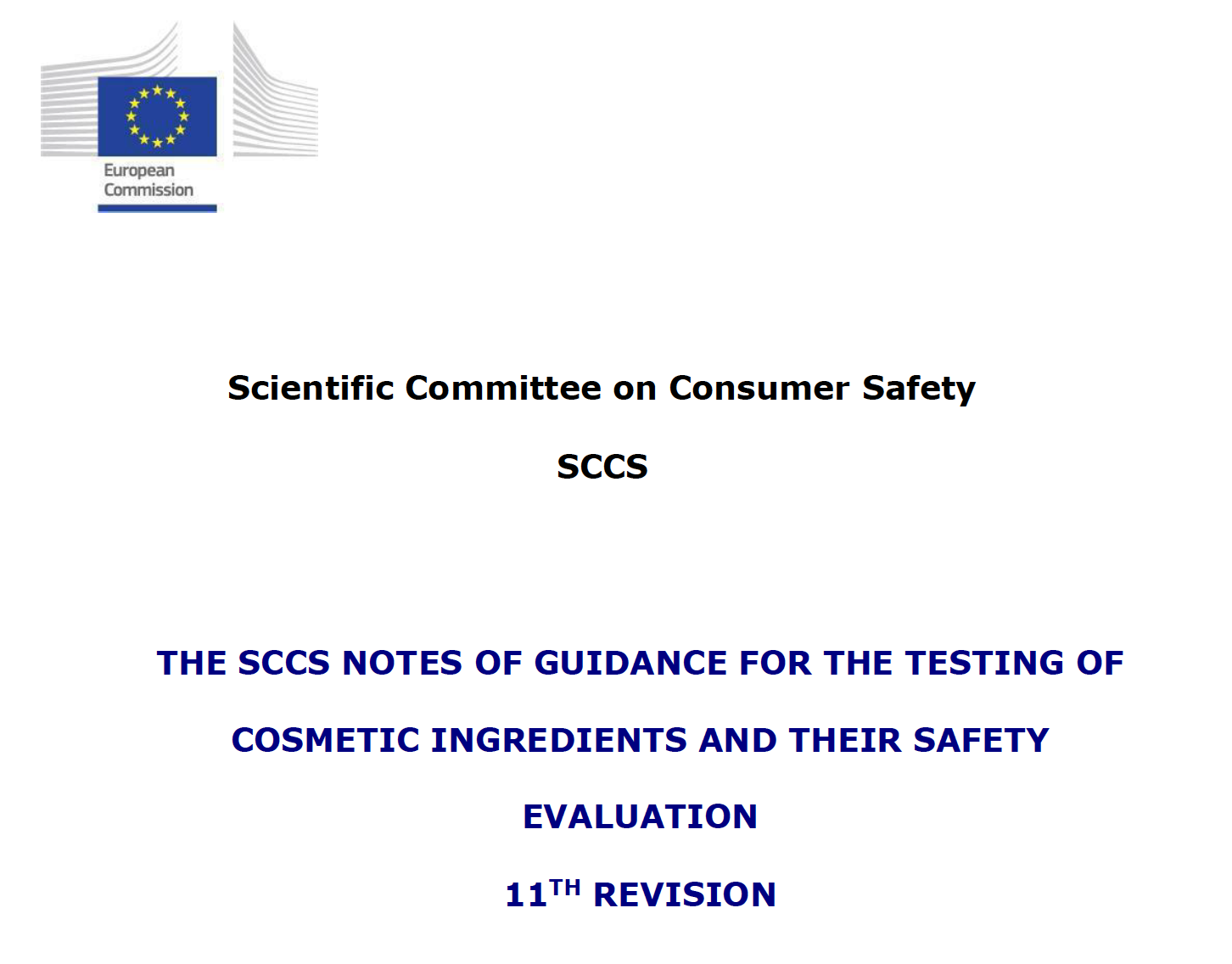The SCCS Notes of Guidance for the Testing of Cosmetic Ingredients and Their Safety Evaluation
The European Commission’s Scientific Committee on Consumer Safety (SCCS) provides opinions on health and safety risks (chemical, biological, mechanical and other physical risks) of non-food consumer products (e.g., cosmetic products and their ingredients) and services. The members of the SCCS also compile an important document called “The SCCS Notes of Guidance for the Testing of Cosmetic Ingredients and Their Safety Evaluation” which is particularly important for assessing cosmetic and personal care products’ safety in the European Union (EU).
These Notes of Guidance (NOGs) contain relevant information about the testing requirements and safety evaluation of cosmetic substances in the Europe Union (EU). Its main purpose is to guide the cosmetic industry and public authorities in order to improve harmonized compliance with the current cosmetic EU legislation (Cosmetics Regulation (EC) No. 1223/2009) and “provide assistance in the complex process of the testing and safety evaluation of cosmetic ingredients in the EU”.
Following the progress of scientific knowledge in general and the experience gained (especially in the field of cosmetics), NOGs are regularly revised and updated. The last revision (10th – SCCS/1602/18) was adopted in 2018. Last month (March 2021) it has been updated by the 11th revision (SCCS/1628/21).
According to the European Cosmetics Regulation, in vivo testing of finished products (11th March 2004), in vivo testing for local toxicity (11th March 2009) and in vivo testing for repeated dose toxicity (including sensitization), toxicokinetics and developmental toxicity of ingredients (11th March 2013) for the purpose of cosmetics is prohibited. In recent years, there were important developments and validation of alternative methods, therefore the 11th revision of the NOGs focus on exposure and the application of alternative methods, specifically on non-animal methods/new approach methodology (NAM).
References:
- Regulation (EC) No 1223/2009 of the European Parliament and of the Council of 30 November 2009 on cosmetic products – https://ec.europa.eu/health/sites/health/files/endocrine_disruptors/docs/cosmetic_1223_2009_regulation_en.pdf
- Scientific Committee on Consumer Safety (SCCS) – The SCCs Notes of Guidance for the Testing of Cosmetic Ingredients and their Safety Evaluation. 11th Revision. SCCS/1628/21 – https://ec.europa.eu/health/sites/health/files/scientific_committees/consumer_safety/docs/sccs_o_250.pdf
- Scientific Committee on Consumer Safety (SCCS) – The SCCs Notes of Guidance for the Testing of Cosmetic Ingredients and their Safety Evaluation. 10th Revision. SCCS/1602/18 – https://ec.europa.eu/health/sites/health/files/scientific_committees/consumer_safety/docs/sccs_o_224.pdf














